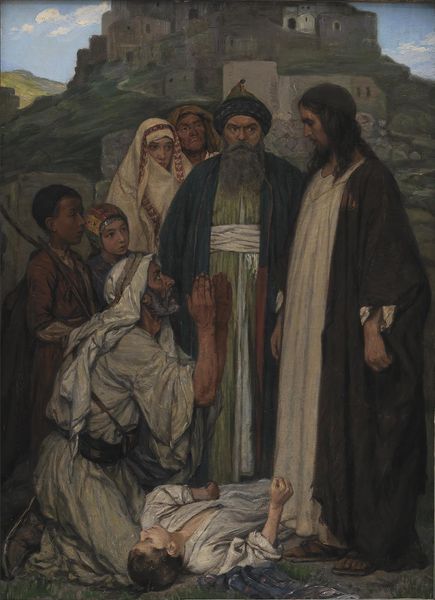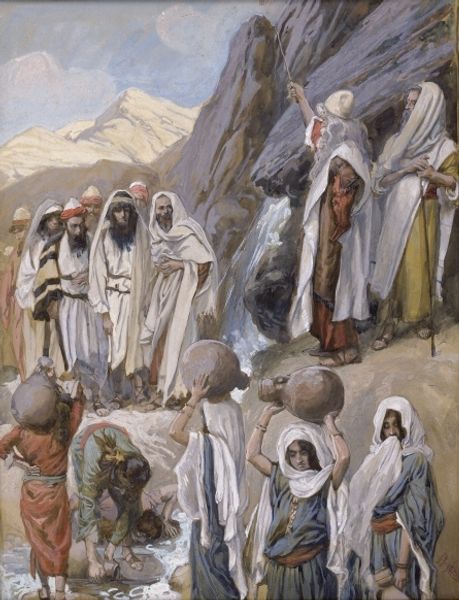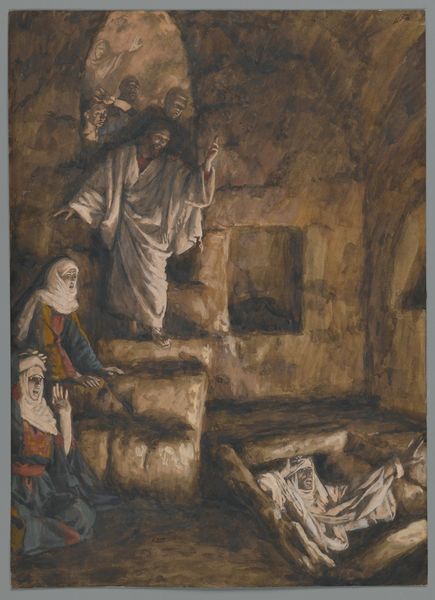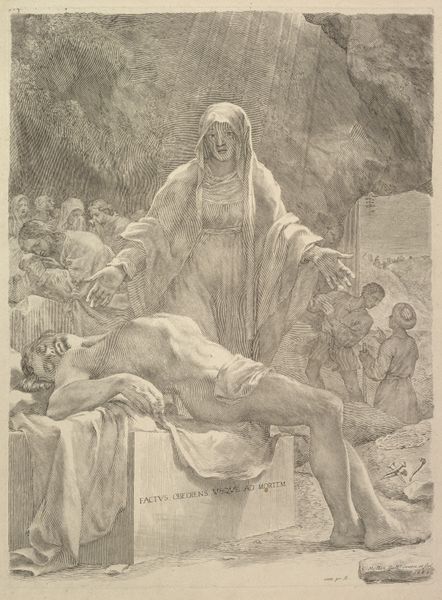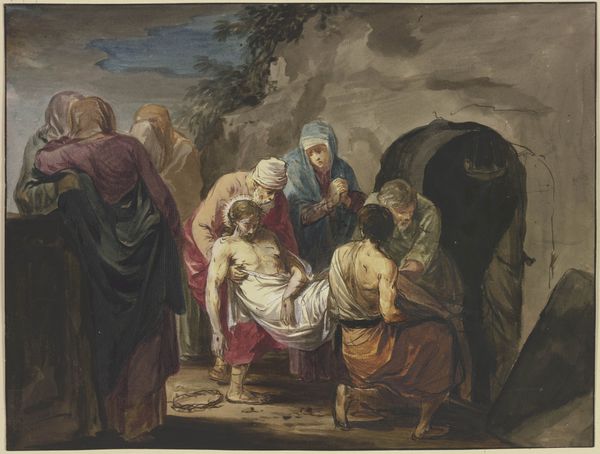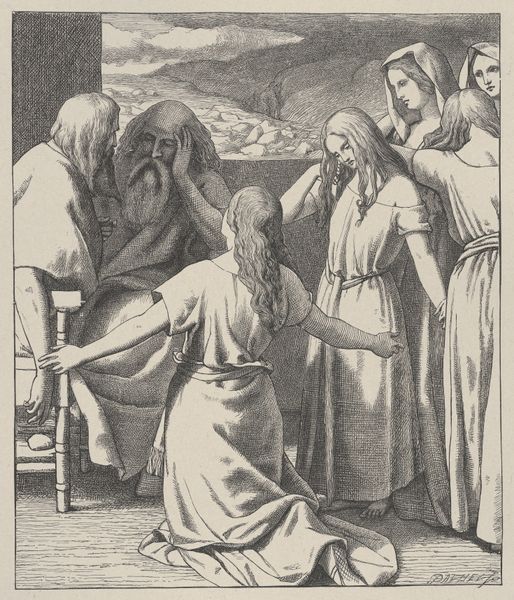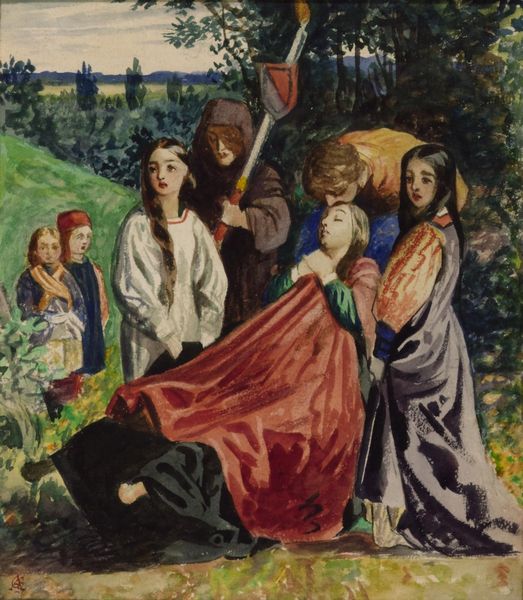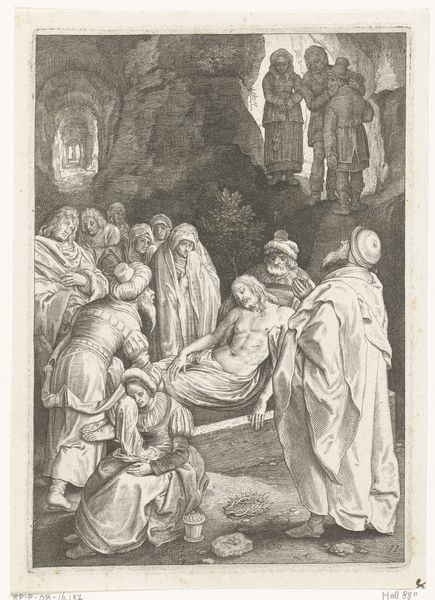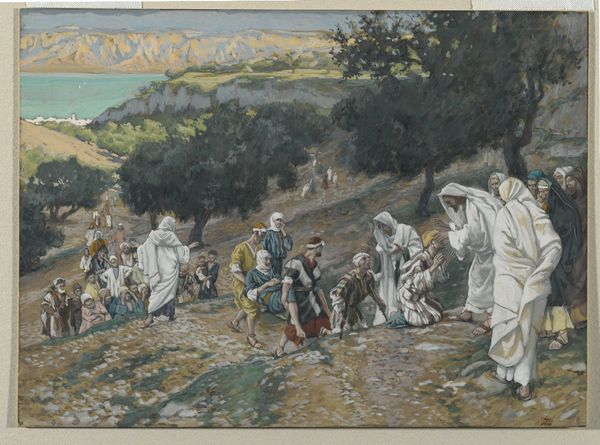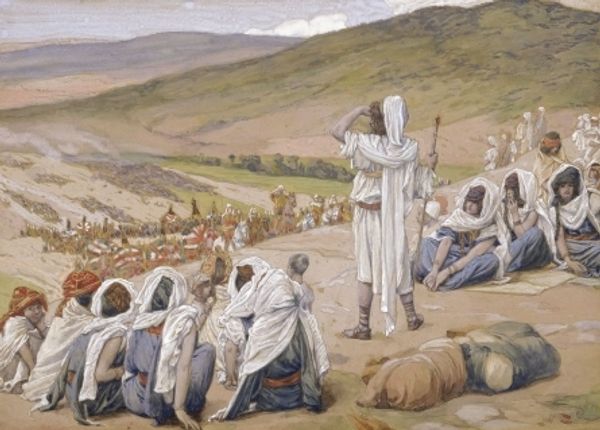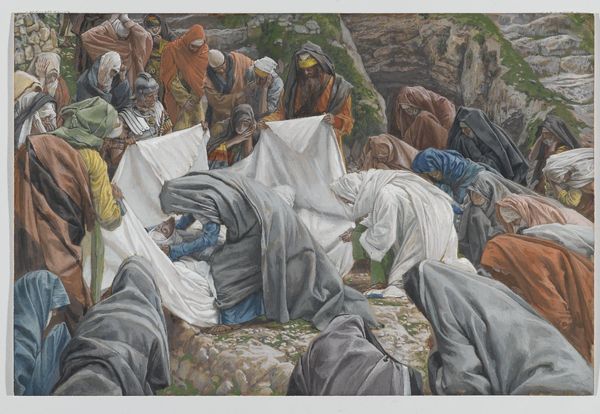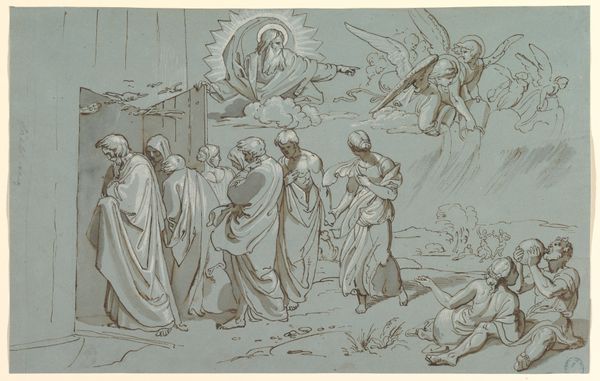
painting, oil-paint
#
portrait
#
painting
#
oil-paint
#
landscape
#
figuration
#
oil painting
#
history-painting
Copyright: Public domain
Curator: Immediately, the pale tones and the upturned face of the boy on the ground draw my attention; there’s an undeniable tension in the image. Editor: You’re looking at "The Possessed Boy at the Foot of Mount Tabor." While the date of the artwork is unknown, this oil painting by James Tissot depicts a New Testament scene. Let’s delve into it further, shall we? Curator: It's difficult not to feel empathy for the prostrate figure. Is the artist perhaps using this imagery to reflect on societal anxieties or marginalization, or to highlight those cast out by society? The figures surrounding him look quite concerned or are in prayer and reflection. Editor: Symbolically, that’s a very perceptive question. Notice how the possessed boy lies between the ordinary world represented by the village behind them and Jesus standing between heaven and earth. Curator: He truly is, isn’t he? He stands, tall, commanding. Tissot contrasts his robes, with the garb worn by everyone else in the painting. A potent visual distinction and assertion of authority. It raises questions about religious institutions. Who do they serve? And do they offer salvation or perpetuate systems of exclusion? Editor: You've hit upon a key point, certainly, and in its essence, the possessed boy, writhing on the ground, functions as a symbol of spiritual and psychological torment. Jesus' stance shows hope and deliverance, but it does so without minimizing or idealizing it, keeping to a form of realism. Tissot painted in line with his religious convictions and dedicated much of his time depicting scenes of the New Testament to provide visual instruction on core theological values of the Christian faith. Curator: So, Tissot might be challenging the viewer to see Christ’s work mirrored in their social responsibilities toward the suffering. What if we consider this boy a figure embodying all the silenced voices, calling upon us to engage with the stories we might otherwise choose to ignore? Editor: I see the broader appeal you suggest; to look with kindness toward those who might need saving from our own biases or societal problems. As a final thought, I am very compelled by how the very real, terrestrial landscape almost mirrors the symbolic weight carried by this historical moment. Curator: A crucial point indeed! Together, these observations grant us insight into the artwork, helping us view with a critical eye.
Comments
No comments
Be the first to comment and join the conversation on the ultimate creative platform.

